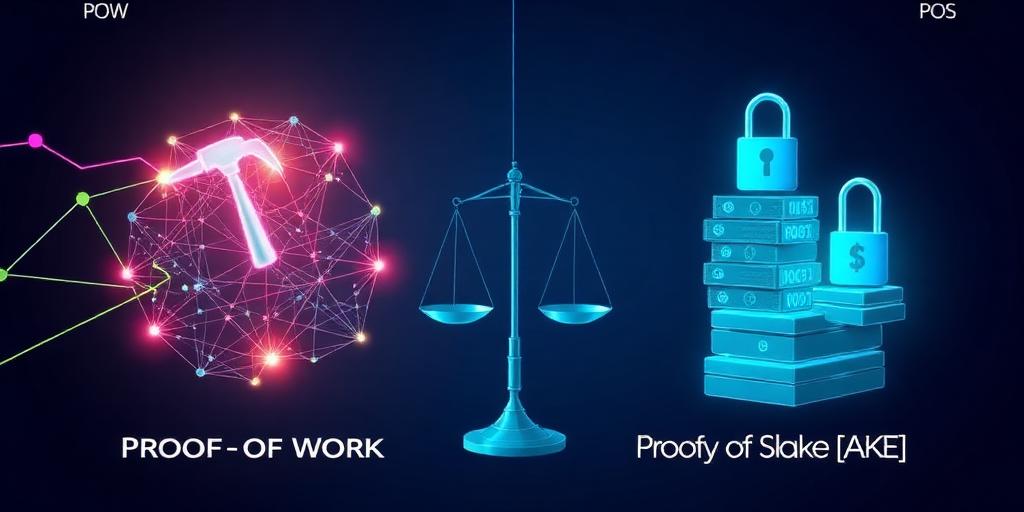The Pros and Cons of Proof-of-Work vs. Proof-of-Stake
In the evolving landscape of blockchain technology, consensus mechanisms are the fundamental pillars that ensure network security, integrity, and agreement among distributed participants. Two dominant paradigms have emerged as the primary methods for achieving this consensus: Proof-of-Work (PoW) and Proof-of-Stake (PoS). Understanding the intricate details of each, along with their respective advantages and disadvantages, is crucial for comprehending the underlying philosophies and future trajectories of various blockchain networks.
Understanding Proof-of-Work (PoW)
Proof-of-Work is the original consensus mechanism, famously pioneered by Bitcoin. It requires participants, known as "miners," to expend significant computational effort to solve a complex mathematical puzzle. The first miner to find the solution gets to add the next block of transactions to the blockchain and is rewarded with newly minted cryptocurrency and transaction fees. This process is inherently resource-intensive, designed to make it prohibitively expensive for a single entity to gain control of the network.
Pros of Proof-of-Work:
- Proven Security: PoW networks, particularly Bitcoin, have demonstrated robust security over long periods, successfully resisting various attack vectors. The sheer cost of a 51% attack makes it economically unfeasible.
- Decentralization: Conceptually, PoW promotes decentralization by allowing anyone with sufficient computing power to participate in mining.
- Simplicity and Finality: The mechanism is relatively straightforward to understand, and once a block is added and deeply confirmed, its finality is extremely high.
Cons of Proof-of-Work:
- High Energy Consumption: The most significant criticism of PoW is its enormous energy footprint, as miners compete by running powerful, electricity-hungry hardware. This concern has led to significant environmental debate and regulatory scrutiny.
- Scalability Limitations: The time required to solve puzzles and propagate blocks inherently limits transaction throughput, leading to slower transaction speeds and higher fees during peak demand.
- Centralization of Mining Pools: While conceptually decentralized, the economics of PoW often lead to the formation of large mining pools, concentrating power in the hands of a few entities.
Understanding Proof-of-Stake (PoS)
Proof-of-Stake emerged as an alternative to PoW, aiming to address its energy inefficiency and scalability challenges. In PoS, instead of competing with computational power, participants known as "validators" lock up (stake) a certain amount of the network's native cryptocurrency as collateral. The protocol then randomly selects a validator to create the next block, with the probability of selection proportional to the amount of cryptocurrency staked. Validators are rewarded for honest participation and penalized (slashed) for malicious behavior.
Pros of Proof-of-Stake:
- Energy Efficiency: PoS drastically reduces energy consumption compared to PoW, as it does not require vast computational resources for mining. This makes it a more environmentally friendly alternative.
- Improved Scalability Potential: PoS designs can often achieve higher transaction throughput and faster block times, making networks more scalable and efficient.
- Lower Barrier to Entry: Participation as a validator generally requires an economic stake rather than specialized hardware, potentially broadening network participation.
Cons of Proof-of-Stake:
- Potential for Centralization of Wealth: Critics argue that PoS could lead to a concentration of power among the wealthiest stakeholders, as those with more tokens have a greater chance of being selected to validate blocks.
- "Nothing-at-Stake" Problem: In some early PoS designs, validators had no incentive to choose between competing blockchain forks, potentially leading to security vulnerabilities. Modern PoS protocols address this with slashing mechanisms.
- Less Proven Security: While rapidly maturing, PoS networks have a shorter track record of security compared to Bitcoin's PoW, leading some to view it as less battle-tested.
- Liquidity Issues: Staked assets are locked, reducing their liquidity and availability for other uses.
PoW vs. PoS: A Comparative Analysis
The choice between PoW and PoS represents a fundamental trade-off in blockchain design, balancing different priorities:
- Security Paradigm: PoW relies on economic cost (electricity, hardware) to secure the network, making attacks expensive. PoS relies on economic stake, penalizing malicious behavior by confiscating collateral.
- Environmental Impact: PoS is overwhelmingly more environmentally friendly due to its minimal energy requirements.
- Decentralization vs. Capital Concentration: PoW aims for hardware-based decentralization (though mining pools can concentrate power), while PoS risks capital concentration, where power gravitates towards the largest stakers.
- Scalability: PoS generally offers superior scalability potential due to faster block finality and less computational overhead.
- Governance: PoS often integrates more direct on-chain governance mechanisms tied to staking, allowing token holders more direct influence over network evolution.
Conclusion
Both Proof-of-Work and Proof-of-Stake offer robust mechanisms for achieving distributed consensus, yet they embody distinct philosophies regarding security, efficiency, and decentralization. PoW, with its time-tested resilience, remains the cornerstone of networks like Bitcoin, prioritizing ultimate security and censorship resistance. PoS, on the other hand, represents a significant leap forward in terms of energy efficiency and scalability, making it the preferred choice for newer, high-throughput blockchains and networks undergoing significant upgrades, such as Ethereum's transition to PoS. The ongoing evolution and refinement of these consensus models will continue to shape the future architecture and capabilities of the decentralized web, with each mechanism finding its optimal application based on specific network goals and priorities.




